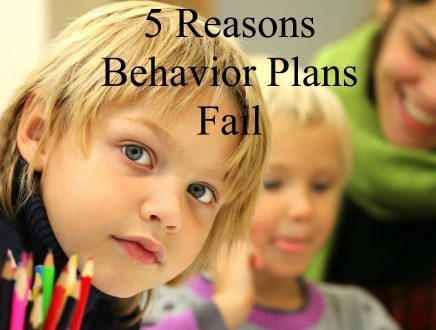This post may contain affiliate links. Affiliate links use cookies to track clicks and qualifying purchases for earnings. Please read my Disclosure Policy, Terms of Service, and Privacy policy for specific details.
Whether you are a parent helping your child at home or a teacher in a classroom, a child’s behavior can interfere with learning and daily tasks. Disruptive, aggressive, other inappropriate behavior can be successfully changed with a well designed behavior plan. Behavior plans are not always successful. I have compiled 5 Reasons Behavior Plans Fail based on my observations and personal experience with interventions that did not quite work out.
5. There were too many variables.
During a formal evaluation for behavior in a school, many professionals are involved. There may be a psychologist, special education teacher, regular education teacher, parent, speech therapist, and occupational therapist to name a few. Each will bring their own philosophies, expectations, and experiences to the table. Sometimes, everyone’s ideas end up in the behavior plan. The teacher and parent will leave with a whole list of interventions to try simultaneously. If one of these interventions does happen to work, how do you know to keep doing that one? You really don’t.
4. Inadequate training.
Even a well designed plan will fail if those responsible for implementing the plan are not adequately trained. Every person who works with the child should be trained and monitored to make sure they understand the procedures and can consistently implement the plan. A poorly executed perfect plan will fail.
3. The plan is not realistic.
I have experienced this from both the parent and teacher perspective. When you are responsible for an entire classroom, you cannot focus your full attention on just one child. As a parent of multiple children, I have found the same to be true. The hardest plan I have tried to follow was to reduce a behavior by providing reinforcement during intervals when the problem behavior did not occur. It is a great research-based plan, but much more difficult to execute in a real setting. I’ll be honest. It was a full on fail.
2. The plan does not address the reason the behavior is happening.
In the field of applied behavior analysis, the reason the behavior is happening is called the function. If the function of the behavior is to get out of an undesirable task, then a time-out procedure would actually increase the behavior. If the function of the behavior is to get attention, any attention will increase the behavior. For example, if a child is disruptive because the task they are required to do is undesirable, then a time-out would probably make it more likely for the child to be disruptive in the future. The plan should consider a more appropriate way for the child to get his or her needs met.
1. The plan fails to address the missing skill that results in the problem behavior.
A behavior can be successfully eliminated and another one will pop up in its place. If this has happened, it is because of a missing skill. For example, I know a child who has difficulty with flexibility. If something unexpected happens that disrupts a routine, if something happens that she does not like, or if she has to wait, she would spit. This spitting behavior was given attention and escalated. It was successfully eliminated over the course of a couple of months through an extinction procedure (planned ignoring). Now the spitting behavior has been replaced with throwing objects. This new behavior should not be ignored for safety reasons. Behavior plans must teach the child a missing skill, such as “waiting,” or the form of the behavior will just change.
Behavior plans can fail if they are poorly designed or poorly executed. Challenging behavior may not respond to typical discipline techniques. A specialized plan may be necessary that addresses the reason the behavior is occurring and teaches the missing skill(s) that result in the undesireable behavior.
To gain a better understanding of applied behavior analysis and the terms used by professionals, you may want to read


